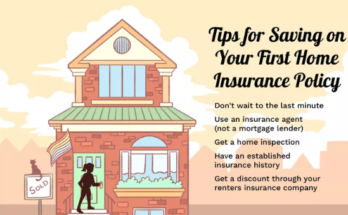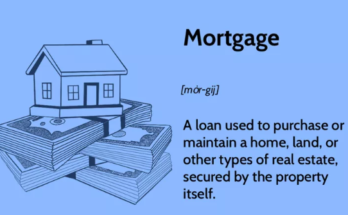What Does Home Insurance Cover? A Detailed Breakdown
Home insurance is an essential safeguard for homeowners, providing financial protection against various risks associated with property ownership. Understanding what home insurance covers is crucial for homeowners to ensure they have adequate coverage for their specific needs. In this detailed breakdown, we will explore the various components of home insurance, how it works, its features, pros and cons, and alternatives available in the market. This comprehensive guide aims to empower homeowners with the knowledge needed to make informed decisions regarding their insurance policies.
H2: What is Home Insurance?
Home insurance, also known as homeowner’s insurance, is a type of property insurance that covers private homes. It provides financial protection against various risks, including damage to the home and personal belongings, liability for injuries to others on your property, and additional living expenses if you are temporarily displaced from your home due to a covered event. Home insurance policies can vary widely in terms of coverage options, so understanding what is included is essential.
Types of Home Insurance Policies
- HO-1 Basic Form: This is a limited policy that provides coverage for specific perils like fire, theft, and vandalism.
- HO-2 Broad Form: This policy offers more extensive coverage than HO-1, protecting against a wider range of perils.
- HO-3 Special Form: This is the most common type of home insurance policy. It covers the home itself against all perils, except those specifically excluded in the policy.
- HO-4 Tenant’s Form: Designed for renters, this policy covers personal belongings but not the structure itself.
- HO-5 Comprehensive Form: This offers the broadest coverage, protecting both the dwelling and personal property against all perils, except those specifically excluded.
H2: How Home Insurance Works
Home insurance operates on the principle of risk pooling. Homeowners pay premiums to the insurance company, which in turn provides coverage for specific risks. When a covered event occurs, the policyholder can file a claim to receive financial compensation for the loss or damage incurred.
Key Terms to Understand
- Premium: The amount paid for the insurance policy, typically on a monthly or annual basis.
- Deductible: The amount the policyholder must pay out-of-pocket before the insurance company covers the remaining costs.
- Coverage Limit: The maximum amount an insurance company will pay for a covered loss.
Home insurance policies typically cover perils such as fire, theft, vandalism, windstorms, and more. However, exclusions apply, so it’s crucial for homeowners to read their policy documents carefully.
H2: Features of Home Insurance Coverage
Home insurance policies come with various features that offer protection and peace of mind for homeowners. Below are the key components:
1. Dwelling Coverage
Dwelling coverage protects the physical structure of the home itself, including walls, roof, and built-in appliances. This coverage is vital for homeowners to ensure their primary asset is protected against damage from fire, storms, and other perils.
2. Personal Property Coverage
This feature covers personal belongings within the home, such as furniture, electronics, and clothing. Typically, coverage is based on a percentage of the dwelling coverage, and policyholders can opt for actual cash value or replacement cost coverage.
3. Liability Coverage
Liability coverage protects homeowners against legal claims arising from injuries or damages incurred by others on their property. For example, if a guest slips and falls, this coverage can help cover legal fees and medical expenses.
4. Additional Living Expenses (ALE)
If a home becomes uninhabitable due to a covered peril, ALE covers the costs of living elsewhere, such as hotel bills and temporary rentals. This ensures that homeowners are not financially burdened while their home is being repaired.
5. Optional Coverages
Homeowners can customize their policies by adding optional coverages like:
- Natural Disaster Coverage: Protects against specific natural disasters not included in standard policies (e.g., floods, earthquakes).
- Home Business Coverage: Offers protection for businesses operated from home, covering business equipment and liability.
H2: Pros of Home Insurance Coverage
| Pros | Description |
|---|---|
| Financial Protection | Provides compensation for damages and losses. |
| Liability Coverage | Covers legal fees for claims arising from injuries. |
| Peace of Mind | Offers reassurance that you are protected financially. |
| Additional Living Expenses | Covers costs incurred when displaced from your home. |
| Customizable Options | Allows policyholders to tailor coverage to their needs. |
H2: Cons of Home Insurance Coverage
| Cons | Description |
|---|---|
| Premium Costs | Monthly or annual premiums can be expensive. |
| Exclusions | Some damages may not be covered, such as wear and tear. |
| Claims Process | Filing claims can be time-consuming and complex. |
| Coverage Limits | May not fully cover high-value items without additional coverage. |
| Policy Complexity | Terms and conditions can be difficult to understand. |
H2: Home Insurance Alternatives
| Alternatives | Description |
|---|---|
| Renters Insurance | Protects personal belongings for renters. |
| Landlord Insurance | Coverage for rental property owners against damages. |
| Umbrella Insurance | Provides additional liability coverage beyond home insurance. |
| Home Warranty | Covers repairs and replacements of home systems and appliances. |
| Self-Insurance | Setting aside funds for emergencies instead of purchasing insurance. |
H2: Conclusion and Verdict: What Does Home Insurance Cover?
Understanding what home insurance covers is essential for protecting one of your most significant investments. With various coverage options available, homeowners can tailor their policies to suit their specific needs. While home insurance provides numerous benefits, it is crucial to be aware of its limitations and exclusions. Regularly reviewing your policy and adjusting your coverage as necessary can ensure that you remain adequately protected. Ultimately, investing in the right home insurance policy is a crucial step in safeguarding your property and financial well-being.
H2: FAQs: What Does Home Insurance Cover?
- What is the average cost of home insurance?
The average cost varies by location, home value, and coverage amount, but typically ranges from $800 to $1,500 annually. - Can I get home insurance for a rental property?
Yes, landlords can purchase specialized insurance policies that cover rental properties. - How often should I review my home insurance policy?
It’s advisable to review your policy annually or after significant life events (e.g., renovations, purchases). - What should I do if I need to file a claim?
Contact your insurance company as soon as possible, document the damage, and follow their claim process. - Are there discounts available for home insurance?
Many insurers offer discounts for bundling policies, having security systems, or being claim-free.
This comprehensive breakdown provides homeowners with a clearer understanding of what home insurance covers and why it is essential for protecting their homes and belongings. With the right information, you can make informed choices about your home insurance needs.



